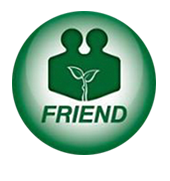The devastation TC Winston had in the province of Ra affected the four districts of Korotubu, Nalawa, Rakiraki and Saivou, especially those communities closer to the coastal areas where most were left without a home, dry clothes, food and clean water. The rapid assessment made a few days after the disaster by FRIEND was to determine two main issues:
- What were the needs as identified by the communities ?
- What capacity did the communities have to address these needs themselves?
Coastal villages of Nakorotubu district had reportedly had 90% of homes wiped out. FRIEND made the rapid assessments in the following communities: Fijian villages – Nausori, Burenitu, Matawailevu, Korovou, Narikoso, Naocobau, Namarai, Saioko, Verevere, Nabukadra, Nayavutoka, Navuniivi, Nayavuira, Nasau, Veidrala, Delaiyadua, Matainananu, Nadogoloa, Naivoco. Indo-Fijian settlements – Barotu, Volivoli, Waimalika, Bainisoqosoqo, Naria and Madhvani.
most of these communities, the need that was expressed the most was to have a temporary home built. This came as a surprise to FRIEND as we perceived that they would request for food, water or clothing first. The responses to our further inquiries on this matter were:
- Their homes have been destroyed and gone with it were their dreams, hard work, assets, a family’s stronghold, memories, aspirations etc.
- Parents and household leaders felt they had a “mental block” with the loss of the home and the sooner they were in a home environment the easier it would be to figure the rest of the issues out.
- Food and water sources were readily available in many coastal communities so they did not feel they will have an issue with that immediately.
- The evacuation centre was occupied in a rush and there was no clarity on how they were going to manage themselves as the number of families was more than the space could cater for in a day. Hygiene, sanitation, food and water, safety and security issues were slowly creeping in as potential sources for conflict.
- There were already cases of conflicts amongst evacuees in two of these Evacuation Centres.
Villages that were completely wiped out said with such devastation said they did not know where to and how to begin rebuilding their lives. We discussed the basics of what they had and some starting points so they could have their much needed home spaces.
Villages spoke about their felled forests that could be used for basic frames if they could access chain saws, they mentioned they had a lot of carpenters and builders and had a lot of available hands however they only had rubble to build from. FRIEND offered to find 12ft x 6 roofing iron for each house totally destroyed. This became a starting point for many. As FRIEND started delivering roofing iron we saw hope and men started building from debris timber to build frames, walls and flooring of their destroyed homes and the squeezed debris roofing iron flattened for walls and toilets. At least they had a space to keep their families protected from the elements.
Barnes family donated 4 chainsaws and Impact Fiji/ SPC through European Union loaned 3 more chainsaws. Youths organised themselves and identified trained chainsaw operators who were briefed and started cutting timber with 7 chainsaws .
It was clear that all they needed was new roofing iron and some nails. FRIEND decided that this was the relief item most relevant to them. Due to the number of families affected FRIEND decided to mobilise funding to assist each family with 6 x 12 feet corrugated roofing iron, 1kg 4inch nails, 1kg 3inch nails and 1kg roofing nails that was able to allow for an 18 feet x 12 feet Lean to Type Temporary Home to be built. Australian Aid through FCDP, Munro Leys and individual donors and groups provided donations. Staff of FRIEND also donated to help purchase much needed roofing iron.
In two weeks more than 500 temporary homes were built by the communities themselves working in groups and whenever a home was completed the families started shifting in and the women, children, the elderlies and PLWDs were relieved to have a decent dry space they could start calling home again. By this time a lot more assistance came in the form of food and clothing and these were easily distributed amongst the individual families and they found that now it was now easier to manage because they were now in the comfort their own HOMES.
FRIEND Associate Director
Dr Jone Hawea


